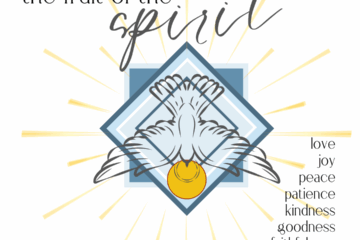Today Hades cried out groaning: “Would that I had not received the One born of Mary; for He came upon me and loosed my power. He shattered the gates of brass; the souls, which I held captive of old, as God He raised up.” Glory O Lord to Your Cross and Your Resurrection.
~Kekragaria, Vesperal Liturgy, Holy Saturday morning, Trans. by Fr. George Papadeas
—
Brethren, I may say to you confidently of the Patriarch David that he both died and was buried, and his tomb is with us to this day. Being therefore a prophet, and knowing that God had sworn with an oath to him that he would set one of his descendants upon his throne, he foresaw and spoke of the resurrection of the Christ, that he was not abandoned to Hades, nor did his flesh see corruption. This Jesus God raised up, and of that we all are witnesses.
Acts 2: 29-32
The service Holy Saturday morning is affectionately called the “Proti Anastasis” or “the First Resurrection.” The problem with that title is that Jesus only rose from the dead once, so if we are coming for the “First Resurrection” on Holy Saturday morning, what are we coming for on Holy Saturday night? More appropriately, this service could be titled “The First Announcement of the Resurrection” which was to those who were in Hades.
While Jesus was resting in Body in the tomb on Holy Saturday, He went down to Hades, the same place where all who had died before Him were consigned. He preached the good news to those in Hades, and resurrected to heaven all those who had been bound there.
The icon of the Resurrection does not depict Jesus coming out of the tomb on Pascha like a triumphal superhero. After all, what would be the inspiration of one man “cheating” death?
Rather the icon of the Resurrection shows Jesus in Hades, raising up all those who have fallen asleep. In the icon, we see John the Baptist, the last of the prophets and the first of the saints, the one who transitioned the end of the Old Testament to announcing the arrival of Christ to begin the New. We see king David, who was promised that his line of descendants would include the Messiah. We see Moses, who led the people out of Israel and received the Law and the Commandments from God and gave it to the people. We see Abraham, going back even further, to the first Covenant from God. And going back to the very beginning, we see Jesus raising up Adam and Eve, the first people who fell through sin. One very important nuance in the icon of the Resurrection is that Jesus is grabbing the wrist of Adam. Taking someone by the hand denotes equality, or meeting someone half-way. Grabbing by the rest denotes that the one holding the wrist is doing the saving, is doing more than half the work. It’s like a symbol that if we reach to God in faith (Adam is reaching up his hand), that God meets us more than half-way.
We are all going to die. That is a fact. That is a consequence of the Fall of Adam and Eve. Through the Resurrection, we have the opportunity to again be in Paradise, as they were before the Fall, to walk intimately with the Lord, as we described in an earlier reflection. The miracle of the Resurrection is that there can be life after death. This is why the icon shows all that died before Christ, so that we know that His death and Resurrection were not a personal stunt, and they weren’t even for a certain group of people (the people that came after the Resurrection). They were for all who had believed, including those who came before that lived lives of faith. We cannot, however, live our lives with no faith, or wait until we have died to find Christ. Those in the tombs were never given an opportunity to know Christ, because He had not yet come into the world. And so they were given a chance to know Him. Christ has been Resurrected. We are in the world. And we have and are being given a chance to know Him. When we live a life where we know Christ and we follow Him through a life that demonstrates faith through works, then when we die, what is depicted in that icon awaits us, through His grace, a raising from the tomb to eternal life.
I love these hymns that describe the frustration of the devil in Hades. The icon of the Resurrection shows keys and broken locks. The devil beat Adam and Eve by getting them to fall to temptation. And in some sense, he will battle us our whole lives as we too work to avoid falling to temptation. In the end though, the devil could not beat Christ. He could not hold Him in Hades. And he will not be able to hold those who believe in Christ there either. At the fall, and afterwards, the people cried out with sorrow as life ended in physical death. At the Resurrection, it was Hades that was mourning, as the captives it held were freed and raised to everlasting life.
Today Hades cried out, groaning: “My authority is dissolved; I received a mortal, as one of the mortals; but this One, I am powerless to contain; with Him I lose all those over which I had rules. For ages I had held the dead, but behold, He raises up all.” Glory O Lord, to Your Cross and Resurrection. (Kekragaria, Vesperal Liturgy, Holy Saturday morning, Trans. by Fr. George Papadeas)
May the icon of the Resurrection eventually include each of us being raised by Christ from death to eternal life!

0 Comments